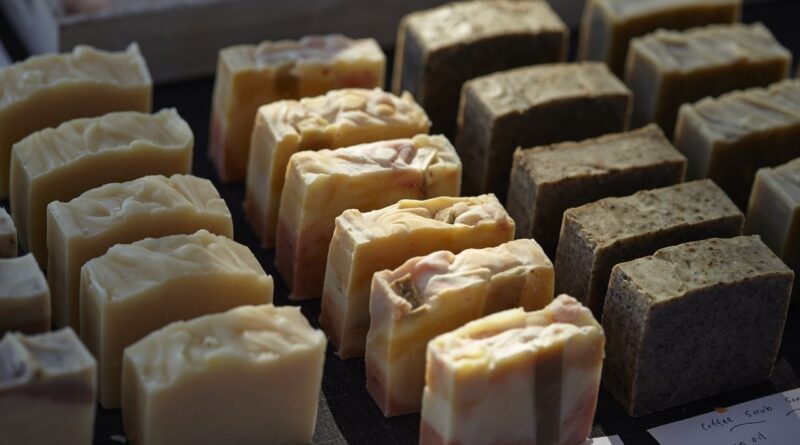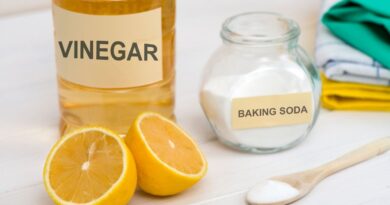How To Make Bar Soap At Home
Many people are under the impression that they can’t make soap at home. It is possible to make soap at home and the beauty of it is the rewarding experience and outcome. Making soap is about chemistry, using the right ingredients in the right proportions. Soaps sold commercially often have hardening materials and other chemicals that leave your hands dry. When you make your handmade soaps, you can determine what goes in to the recipe plus you can add your preferred scents.
Safety First
Remember soap making is chemistry process which means you will work with chemical reactions. So you need to make sure you consider your safety, safety of those around you and safety of the space in which you will be making the soap.
Soap Making Ingredients
Always research about the ingredients you are planning to use first. Make sure to understand how they react when mixed with other ingredients as well as what they are made of. Here is a list of the key ingredients you will be working with:-
- Lye
It is sodium hydroxide, an alkali substance. It is caustic and highly irritant however it is crucial to the saponification process. Lye also referred to as Caustic Soda is available in Kenya at about Kshs.100 per kilogram. Make sure to buy pure raw lye.
- Oils
The type of oil will affect the hardness and lather of the soap. The combination of oils you choose to use can be optimized to acheive the desired hardness or softness. Here are a few examples:-
Coconut Oil: Hard with lots of lather. Makes the soap dry so add fat to soften the soap.
Palm Oil: Hard and makes a long lasting bar, produces mild lather and a great alternative to animal fat.
Olive Oil: Soft with low cleansing effects. Castile soap is 100% olive oil making it suitable for sensitive skin. Takes a longer time to cure and harden. It is advisable to use extra virgin oil.
Lard: Hard with a creamy lather.
Cocoa Butter: Makes a brittle and long-lasting soap with a creamy lather.
Shea Butter: Hard with a medium creamy lather. Produces a long lasting bar.
Castor Oil: Improves lather by improving soap solubility.
Other options: Avocado oil, almon oil etc.
- Fragrances and Essential Oils
Fragrance oil is a mixture of natural and synthetic oils carefully blended to produce alluring and captivating scents. There are soap safe fragrance oils that are safe to your skin but make sure you purchase fragrance oil that is safe for use on the skin.
Essential oils are natural and made from plants by capturing the essence of the plant. These oils are taken from various parts of the plant, depending on the plant.
Other Materials
Herbs, Roots, Flowers and Fruits
These can be wonderful additions to your soap, so keeping an open mind and trying out different variations is a great way of enjoying your soap making journey.
Colorants
Adding color to your soap can be good fun. Also, color helps to compliment the flavour and name for example purple for lavender soap.
Equipment
There is a variety of equipment that you need to have to make your soap. These are
- Goggles and Rubber Gloves
As mentioned earlier, safety is key. Make sure you wear protective eye goggles and gloves for your hands. These are key in protecting you against the irritant lye solution during mixing the soap.
- Spatula and Spoons For Stirring
You will need rubber spatulas and spoons for stirring and scraping off the soap mix. You can also use wooden ones for stirring. Plastic could work but make sure it is heat resistant to resist the heat emitted when the saponification reaction takes place.
- Digital Scale or Kitchen Scale and Measuring Cups
You need to take accurate measurements of ingredients in order to be successful. A sensitive scale will provide you with the accuracy needed for a good product.
- Soap Pot
You need a pot in which you will make the soap. A sufuria (Stainless steel pot) will work or a plastic bucket. A large pot or bucket (a popular one used in Kenya is the 20L recycled paint bucket).
- Thermometer
This will help to accurately measure the temperature of the oils and lye water
- Mold
The bar soap making process is not complete without pouring your mixture into a mold. For this, the choice is really yours. You can choose to purchase molds of particular shapes or even recycle containers at home.
- Hand Blender
To start the saponification process, you need a hand blender to speed up the process. Stirring by hand is possible (so don’t worry if you can’t afford a blender), however be ready to work extra hard to achieve the trace.
- Measuring Cups
You will need various measuring containers so as to measure and weigh the ingredients
- Glass Jugs
It is important to label this one “harzadous” as it will be used for mixing the lye. A second jug will be needed to weigh and heat the oil
Extras
Soap cutters, decorative stamps, labels. These are dependent on your needs.
Soap Making Recipe
When it comes to making your soap, the recipe depends on what outcome you are looking for i.e fragrance, color, shape, quantity and all. However the basic process is always the same. Here are the steps
Weigh the ingredients
Add water to the jug
Add lye to the water in the jug (ensure to always add lye to the water and never the other way around) and stir to make a lye solution
Heat the oils to 43.3 degrees C or 110 F
Remove the oil from the heat and pour in the bucket or stainless steel pot.
Add the lye solution to the oil in the plastic bucket or stainless steel pot when it cools to 37.7 degrees C or 100 F and stir
Using the hand blender, mix the mixture in bursts until you achieve trace
Add your fragrance and/or essential oils and stir
Pour your soap mixture into your chosen mold and let it harden for 12 – 24 hours to solidify
Let the soap cure for 3 – 4 weeks and you can use it
Make sure to thoroughly clean your equipment after making your soap.
Many people are under the impression that they can’t make soap at home. It is possible to make soap at home and the beauty of it is the rewarding experience and outcome. Making soap is about chemistry, using the right ingredients in the right proportions. Soaps sold commercially often have hardening materials and other chemicals that leave your hands dry. When you make your handmade soaps, you can determine what goes in to the recipe plus you can add your preferred scents.
Safety First
Remember soap making is chemistry process which means you will work with chemical reactions. So you need to make sure you consider your safety, safety of those around you and safety of the space in which you will be making the soap.
Soap Making Ingredients
Always research about the ingredients you are planning to use first. Make sure to understand how they react when mixed with other ingredients as well as what they are made of. Here is a list of the key ingredients you will be working with:-
- Lye
It is sodium hydroxide, an alkali substance. It is caustic and highly irritant however it is crucial to the saponification process. Lye also referred to as Caustic Soda is available in Kenya at about Kshs.100 per kilogram. Make sure to buy pure raw lye.
- Oils
The type of oil will affect the hardness and lather of the soap. The combination of oils you choose to use can be optimized to acheive the desired hardness or softness. Here are a few examples:-
Coconut Oil: Hard with lots of lather. Makes the soap dry so add fat to soften the soap.
Palm Oil: Hard and makes a long lasting bar, produces mild lather and a great alternative to animal fat.
Olive Oil: Soft with low cleansing effects. Castile soap is 100% olive oil making it suitable for sensitive skin. Takes a longer time to cure and harden. It is advisable to use extra virgin oil.
Lard: Hard with a creamy lather.
Cocoa Butter: Makes a brittle and long-lasting soap with a creamy lather.
Shea Butter: Hard with a medium creamy lather. Produces a long lasting bar.
Castor Oil: Improves lather by improving soap solubility.
Other options: Avocado oil, almon oil etc.
- Fragrances and Essential Oils
Fragrance oil is a mixture of natural and synthetic oils carefully blended to produce alluring and captivating scents. There are soap safe fragrance oils that are safe to your skin but make sure you purchase fragrance oil that is safe for use on the skin.
Essential oils are natural and made from plants by capturing the essence of the plant. These oils are taken from various parts of the plant, depending on the plant.
Other Materials
Herbs, Roots, Flowers and Fruits
These can be wonderful additions to your soap, so keeping an open mind and trying out different variations is a great way of enjoying your soap making journey.
Colorants
Adding color to your soap can be good fun. Also, color helps to compliment the flavour and name for example purple for lavender soap.
Equipment
There is a variety of equipment that you need to have to make your soap. These are
- Goggles and Rubber Gloves
As mentioned earlier, safety is key. Make sure you wear protective eye goggles and gloves for your hands. These are key in protecting you against the irritant lye solution during mixing the soap.
- Spatula and Spoons For Stirring
You will need rubber spatulas and spoons for stirring and scraping off the soap mix. You can also use wooden ones for stirring. Plastic could work but make sure it is heat resistant to resist the heat emitted when the saponification reaction takes place.
- Digital Scale or Kitchen Scale and Measuring Cups
You need to take accurate measurements of ingredients in order to be successful. A sensitive scale will provide you with the accuracy needed for a good product.
- Soap Pot
You need a pot in which you will make the soap. A sufuria (Stainless steel pot) will work or a plastic bucket. A large pot or bucket (a popular one used in Kenya is the 20L recycled paint bucket).
- Thermometer
This will help to accurately measure the temperature of the oils and lye water
- Mold
The bar soap making process is not complete without pouring your mixture into a mold. For this, the choice is really yours. You can choose to purchase molds of particular shapes or even recycle containers at home.
- Hand Blender
To start the saponification process, you need a hand blender to speed up the process. Stirring by hand is possible (so don’t worry if you can’t afford a blender), however be ready to work extra hard to achieve the trace.
- Measuring Cups
You will need various measuring containers so as to measure and weigh the ingredients
- Glass Jugs
It is important to label this one “harzadous” as it will be used for mixing the lye. A second jug will be needed to weigh and heat the oil
Extras
Soap cutters, decorative stamps, labels. These are dependent on your needs.
Soap Making Recipe
When it comes to making your soap, the recipe depends on what outcome you are looking for i.e fragrance, color, shape, quantity and all. However the basic process is always the same. Here are the steps
Weigh the ingredients
Add water to the jug
Add lye to the water in the jug (ensure to always add lye to the water and never the other way around) and stir to make a lye solution
Heat the oils to 43.3 degrees C or 110 F
Remove the oil from the heat and pour in the bucket or stainless steel pot.
Add the lye solution to the oil in the plastic bucket or stainless steel pot when it cools to 37.7 degrees C or 100 F and stir
Using the hand blender, mix the mixture in bursts until you achieve trace
Add your fragrance and/or essential oils and stir
Pour your soap mixture into your chosen mold and let it harden for 12 – 24 hours to solidify
Let the soap cure for 3 – 4 weeks and you can use it
Make sure to thoroughly clean your equipment after making your soap.



You are most welcome!